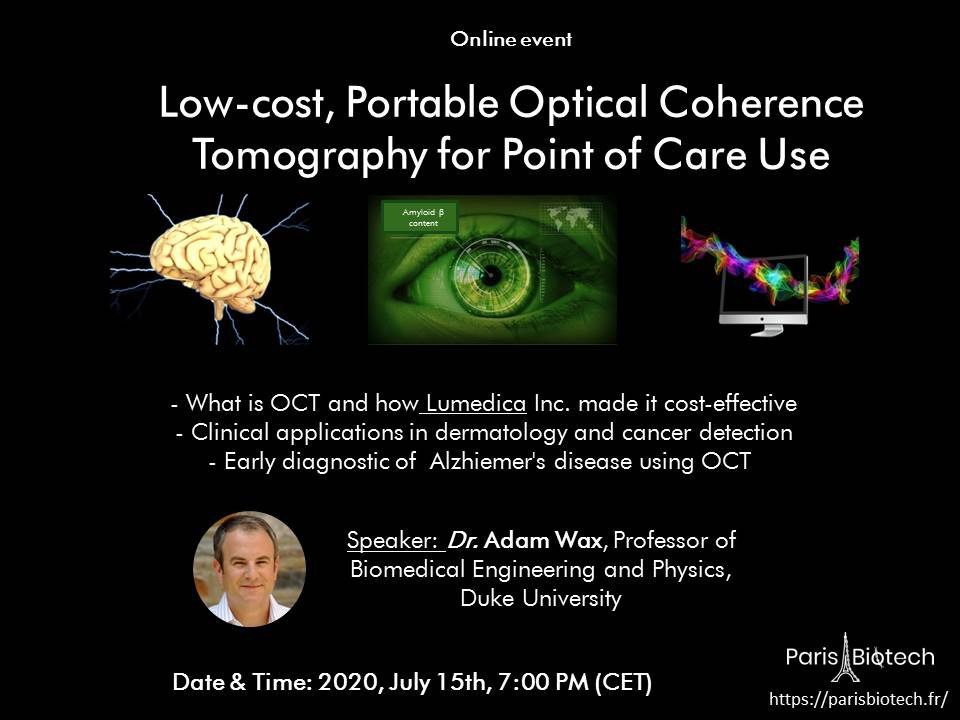


Date & Time of event : 2020, July 15
Format of event : Online
“Low-cost, Portable Optical Coherence Tomography for Point of Care Use”
Speaker: Dr. Adam Wax, Dept. of Biomedical Engineering, Duke University. Here and below is more information about the speaker and the talk.
Video from the event you can watch on our Youtube channel Paris Biotech
Summary
Optical Coherence Tomography (OCT) is a biomedical optical imaging technique that uses low coherence interferometry to resolve backscattered light by depth. It has become a widely used technique for ophthalmology for its unique ability to non-invasively assess the various layers of the retina. However, the high cost of clinical OCT systems (up to $150,000) has limited access to mostly large eye centers and laboratories. We have chosen to pursue a low-cost OCT system to increase patient access, particularly in low cost settings. To further increase access we have developed a highly portable and robust system, capable of operating at the point of care. This talk will present design and applications of low-cost OCT, including identifying retinal biomarkers of Alzheimer’s disease.
Dr. Adam Wax, Dept. of Biomedical Engineering, Duke University
Adam Wax received dual B.S. degrees in 1993, one in electrical engineering from Rensselaer Polytechnic Institute, Troy, NY and one in physics from the State University of New York at Albany, and the Ph.D. degree in physics from Duke University, Durham, NC in 1999. He joined the George R. Harrison Spectroscopy Laboratory at the Massachusetts Institute of Technology, as a postdoctoral fellow of the National Institutes of Health immediately after his doctorate. In 2002, Dr. Wax joined the faculty of the Department of Biomedical Engineering at Duke University. In 2006, Dr. Wax founded Oncoscope, Inc. to commercialize early cancer detection technology developed in his laboratory and Lumedica, Inc. in 2014 to develop low cost OCT systems. He is a fellow of the Optical Society of America, SPIE, and AIMBE and is inventor on 19 US patents. His research interests are in the use of light scattering and interferometry to probe the biophysical properties of cells for both diagnosis of disease and fundamental cell biology studies.
Here is the story of Dr. Adam Wax:
How OCT works? OCT is an optical analog of Ultrasound imaging. You sed light into the tissue and masure theback scateered light.